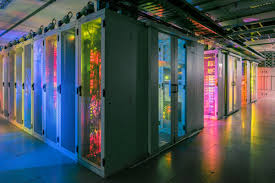Source: insidebigdata.com
There’s no doubt that artificial intelligence continues to be swiftly adopted by companies worldwide. In just the last few years, most companies that were evaluating or experimenting with AI are now using it in production deployments. When organizations adopt analytic technologies like AI and machine learning (ML), it naturally prompts them to start asking questions that challenge them to think differently about what they know about their business across departments, from manufacturing, production and logistics, to sales, customer service and IT. An organization’s use of AI and ML tools and techniques – and the various contexts in which it uses them – will change as they gain new knowledge.
O’Reilly’s learning platform is a treasure trove of information about the trends, topics, and issues tech and business leaders need to know to do their jobs and keep their businesses running. We recently analyzed the platform’s user usage to take a closer look at the most popular and most-searched topics in AI and ML. Below are some of the key findings that show where the state of AI and ML is, and where it is headed.
Unrelenting Growth in AI and ML
First and foremost, our analysis found that interest in AI continues to grow. When comparing 2018 to 2019, engagement in AI increased by 58% – far outpacing growth in the much larger machine learning topic, which increased only 5% in 2019. When aggregating all AI and ML topics, this accounts for nearly 5% of all usage activity on the platform. While this is just slightly less than high-level, well-established topics like data engineering (8% of usage activity) and data science (5% of usage activity), interest in these topics grew 50% faster than data science. Data engineering actually decreased about 8% over the same time due to declines in engagement with data management topics.
We also discovered early signs that organizations are experimenting with advanced tools and methods. Of our findings, engagement in unsupervised learning content is probably one of the most interesting. In unsupervised learning, an AI algorithm is trained to look for previously undetected patterns in a data set with no pre-existing labels or classification with minimum human supervision or guidance. In 2018, the usage for unsupervised learning topics grew by 53% and by 172% in 2019.
But what’s driving this growth? While the names of its methods (clustering and association) and its applications (neural networks) are familiar, unsupervised learning isn’t as well understood as its supervised learning counterpart, which serves as the default strategy for ML for most people and most use cases. This surge in unsupervised learning activity is likely driven by a lack of familiarity with its uses, benefits, and requirements by more sophisticated users who are faced with use cases not easily addressed with supervised methods.
Deep Learning Spurs Interest in Other Advanced Techniques
While deep learning cooled slightly in 2019, it still accounted for 22% of all AI and ML usage. We also suspect that its success has helped spur the resurrection of a number of other disused or neglected ideas. The biggest example of this is reinforcement learning. This topic experienced exponential growth, growing over 1,500% since 2017.
Even with engagement rates dropping by 10% in 2019, deep learning itself is one of the most popular ML methods among companies that are evaluating AI, with many companies choosing the technique to support production use cases. It might be that engagement with deep learning topics has plateaued because most people are already actively engaging with the technology, meaning growth could slow down.
Natural language processing is another topic that has showed consistent growth. While its growth rate isn’t huge – it grew by 15% in 2018 and 9% in 2019 – natural language processing accounts for about 12% of all AI and ML usage on our platform. This is around 6x the share of unsupervised learning and 5x the share of reinforcement learning usage, despite the significant growth these two topics have experienced over the last two years.
Not all AI/ML methods are treated equally, however. For example, interest in chatbots seems to be waning, with engagement decreasing by 17% in 2018 and by 34% in 2019. This is likely because chatbots were one of the first application of AI and is probably a reflection of the relative maturity of its application.
The growing engagement in unsupervised learning and reinforcement learning demonstrates that organizations are experimenting with advanced analytics tools and methods. These tools and techniques open up new use cases for businesses to experiment and benefit from, including decision support, interactive games, and real-time retail recommendation engines. We can only imagine that organizations will continue to use AI and ML to solve problems, increase productivity, accelerate processes, and deliver new products and services.


